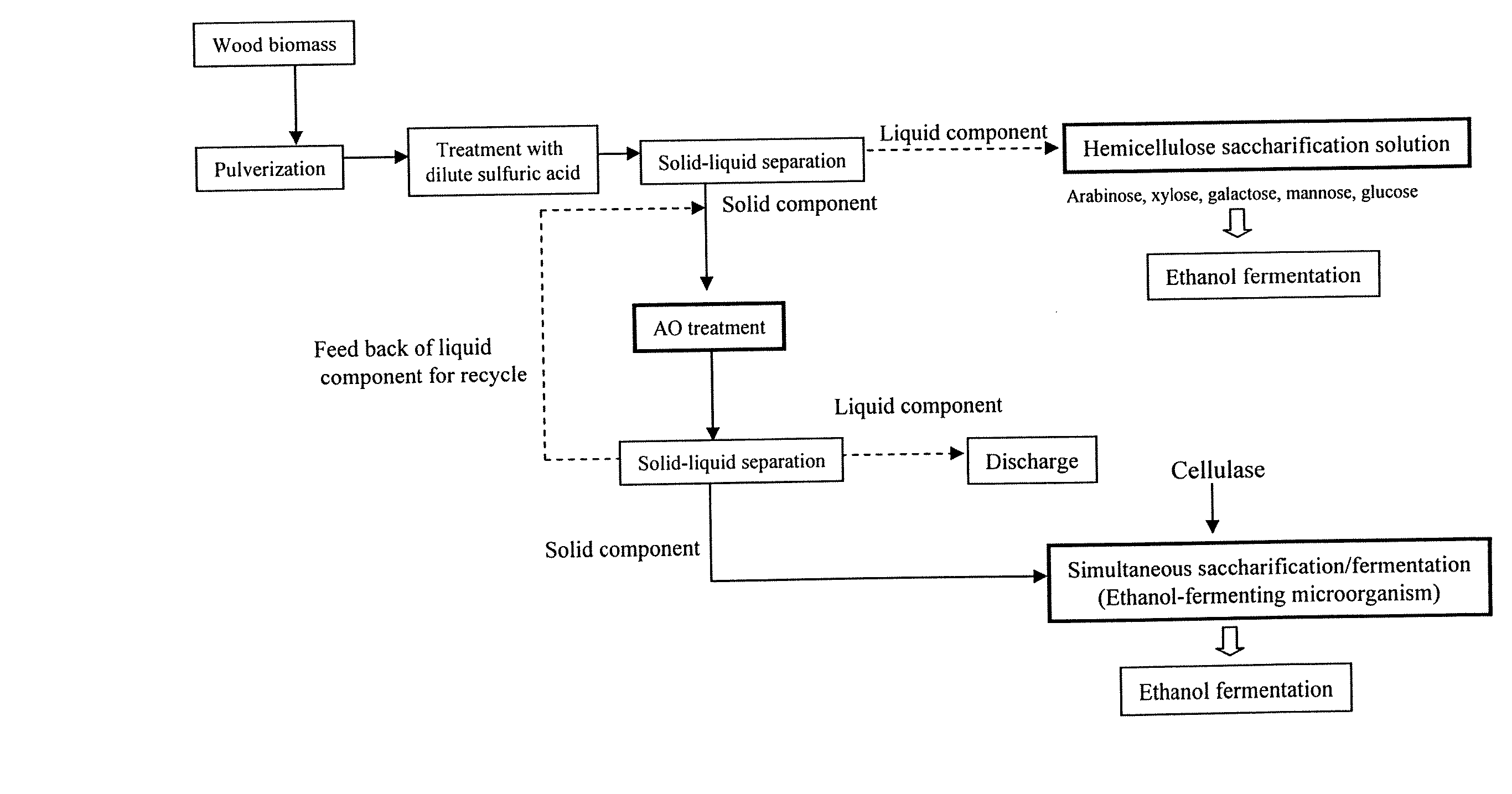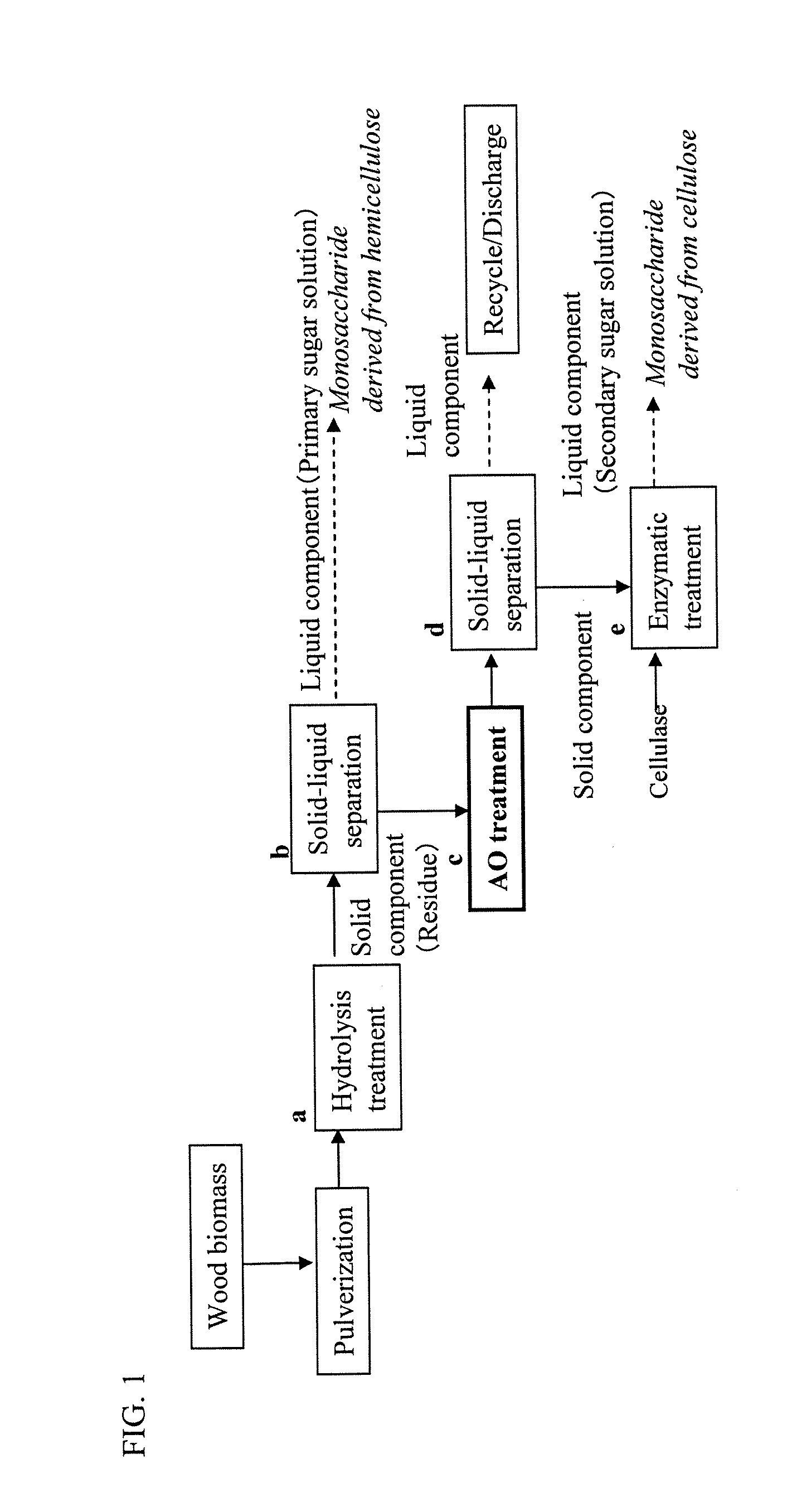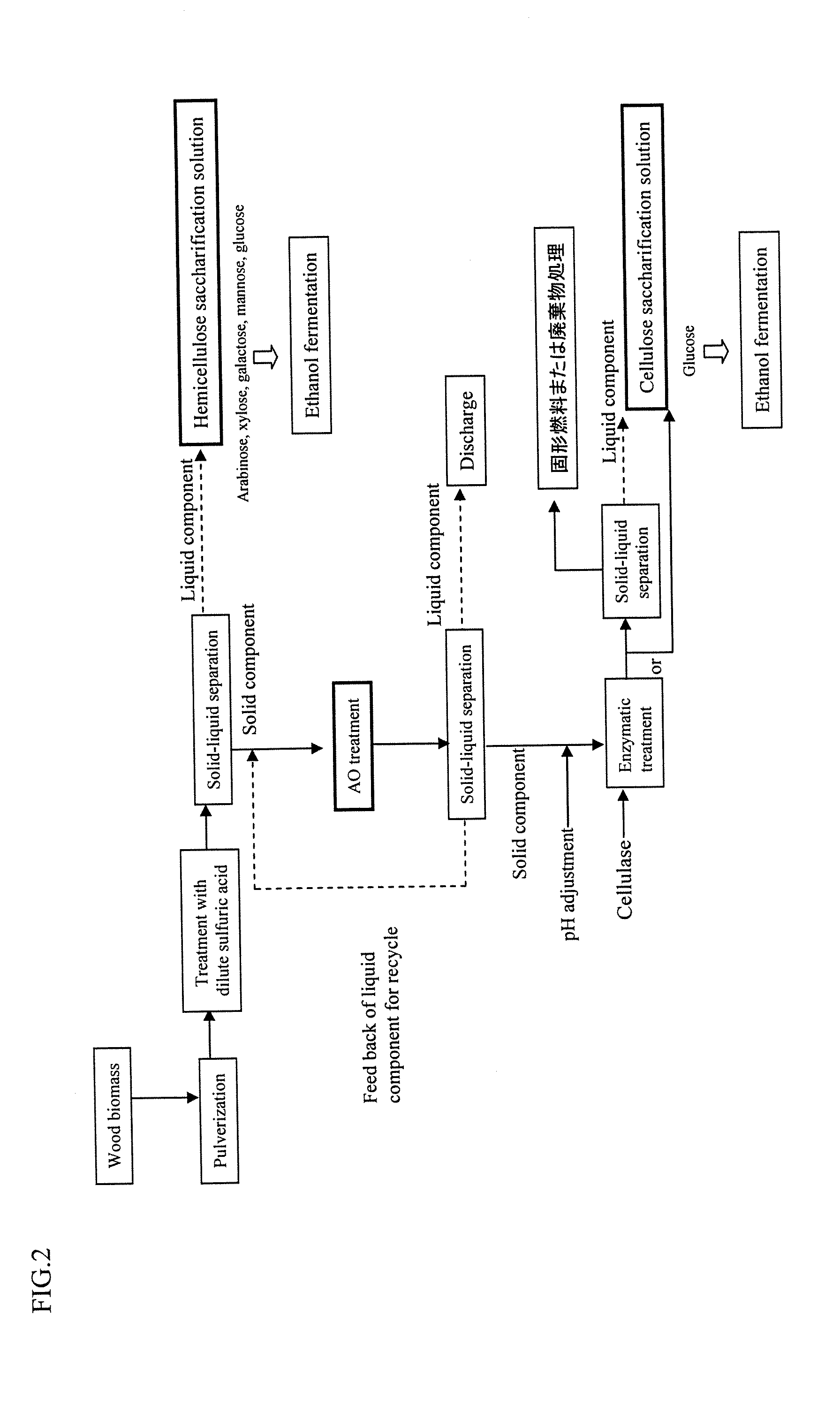Method for saccharification of woody biomass
- Summary
- Abstract
- Description
- Claims
- Application Information
AI Technical Summary
Benefits of technology
Problems solved by technology
Method used
Image
Examples
example 1
[0085] In this Example, saccharification treatment was performed by use of pulverized building-material waste as woody biomass. The composition of the pulverized building material waste was previously analyzed. As a result, the pulverized building material waste was composed of 27% of hemicellulose, 40% of cellulose and 33% of lignin+ash. The pulverized wood sample was treated under each of the conditions shown in Table 1 and saccharification efficiency under each condition was obtained. The conditions shown in No. 4 of Table 1 correspond to those of the present invention.
[0086] The pulverized wood sample (No. 1) was mixed with 2% dilute sulfuric acid and the mixture was allowed to react at 170° C. for 10 minutes (dilute sulfuric acid treatment) in the first saccharification stage. Subsequently, the resultant residue was pulverized again by a refiner and mixed with 2% dilute sulfuric acid at 220° C. for 10 minutes (dilute sulfuric acid treatment).
[0087] The sample (No. 2) was mixe...
example 2
[0094] In this Example, an optimal pH for the alkaline treatment was obtained using the residue (containing 49% of cellulose and 51% of lignin, etc.) obtained in the first saccharification stage (dilute sulfuric acid treatment) of Example 1. Eleven 200 mL culture bottles were prepared. To each of the bottles, 5 g of the residue obtained after the dilute sulfuric acid treatment was placed. Further, 100 mL of an aqueous alkaline solution, whose pH was adjusted by 10% aqueous solution of sodium hydroxide to 8.5 to 13.5, was added. The mixture was stirred at normal temperature for 3 hours. Thereafter, hydrogen peroxide was poured in each of the culture bottles so as to obtain a final concentration of 1%. The mixture was maintained as it was for 12 hours.
[0095] After completion of the reaction, the residue was subjected to solid-liquid separation. The residue was mixed with an acetic acid buffer at pH 4.8 and treated with cellulase. Note that the addition amount of cellulase (GC 220 man...
example 3
[0098] In this Example, effect of a hydrogen peroxide solution was checked by use of the residue (49% of cellulose and 51% of lignin, etc.) obtained in the first saccharification stage (dilute sulfuric acid treatment) of Example 1. Nine 200 mL culture bottles were prepared. To each of the bottles, 5 g of the residue obtained after the treatment of dilute sulfuric acid was placed. Further, 100 mL of an aqueous alkaline solution, whose pH was adjusted with sodium hydroxide to 12, was added. The mixture was stirred at normal temperature for 3 hours. A 31% hydrogen peroxide solution was added to individual bottles so as to obtain final concentrations of 0%, 0.1%, 0.3%, 0.5%, 0.8%, 1.0%, 2.0%, 5.0%, and 10.0%, respectively. The mixture solutions were maintained as they were for 12 hours.
[0099] After completion of the reaction, the residue was subjected to solid-liquid separation. The residue was mixed with an acetic acid buffer at pH 4.8 and treated with cellulase. Note that the additio...
PUM
 Login to View More
Login to View More Abstract
Description
Claims
Application Information
 Login to View More
Login to View More - R&D
- Intellectual Property
- Life Sciences
- Materials
- Tech Scout
- Unparalleled Data Quality
- Higher Quality Content
- 60% Fewer Hallucinations
Browse by: Latest US Patents, China's latest patents, Technical Efficacy Thesaurus, Application Domain, Technology Topic, Popular Technical Reports.
© 2025 PatSnap. All rights reserved.Legal|Privacy policy|Modern Slavery Act Transparency Statement|Sitemap|About US| Contact US: help@patsnap.com



